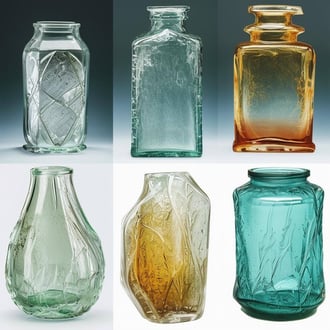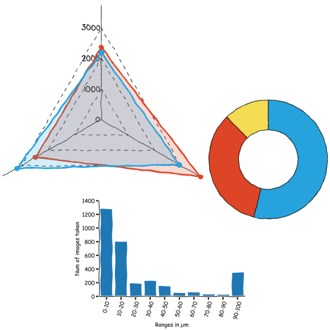Discover the capabilities of WaveMode AFM in characterizing bottlebrush polymers with unprecedented detail and speed, ...

The ultimate tool for nanoscale research from biological molecules to advanced new materials.
The versatile mid-range research AFM that grows with your demands in modes and accessories.
A compact affordable research AFM that is astoundingly easy to use, with more than 30 modes and options.
Fastest reliable sub-Angstrom surface roughness metrology.
Bringing the power of DriveAFM to a wafer metrology system purpose-built for the requirements of the semiconductor industry.
Measure roughness and other material properties of heavy and large samples up to 300 mm and 45 kg.
For unique requirements, we will design a bespoke AFM solution, leveraging our decades of engineering expertise.
Slide an AFM onto your upright optical microscope turret for a leap in resolution.
One of the smallest ever AFMs, created for integration into custom stages or existing setups.
A flexibly mountable research-grade scan head for integration into custom stages or existing set ups.
What is atomic force microscopy (AFM)? How does AFM work? What AFM modes do I really need? How do I get started with AFM?
Learn how AFM works with cantilever/tip assembly interacting with the sample. Explore CleanDrive technology, calibration methods, and feedback principles for precise nanoscale imaging.
An overview of common AFM modes. To learn about each mode in more detail and see application, view the full article.
We regularly publish detailed reviews providing practical guidance and theoretical background on various AFM applications.
Read detailed technical descriptions about selected AFM techniques and learn how to perform specific measurements on Nanosurf instruments.
A library of links to research papers in which Nanosurf instruments were used.
Learn AFM from our library of recorded webinars, covering different measurement techniques, modes, and areas of application.
Short video clips explaining how to perform different operations on Nanosurf instruments.
Watch a product demonstration to learn about the capabilities of our AFMs.
Short videos of our AFMs.
Browse news articles, press releases and a variety of other articles all around Nanosurf
Browse Héctor Corte-Léon's weekly experiments, for inspiration, entertainment, and to discover everyday applications of AFM.

Héctor here, your AFM expert at Nanosurf calling out for people to share their Friday afternoon experiments. Today I show you how I study lettuce stomata.
Did you knew that the world production of lettuce per person has been more or less constant for the last 20 years? (Despite the population growing massively during that period of time).
This means that for the foreseeable future, we will have to increase lettuce production, and there is only two ways of doing it, either using more resources, like land, water and energy, or becoming more efficient.
This is why there are people looking at growing lettuce in different environments (e.g. space), or modifying the lettuce itself. In both cases, we need to make sure everything in lettuce works well, and one very important part is the stomata.
We look at stomata before in #fridayAFM, do you remember this?
in fact, I presented some results at the MMC conference last year, did you remember the first fridayAFM happening on a Wednesday?
This week, I presented more results at the Sondes Locales conference in Lyon, and I would like to share with you more information about the stoma in lettuces.
The stoma regulates gas interchange and has the important task of protecting the plant from external agents like bacteria trying to enter the plant. So, for instance, if we genetically modify lettuces and they start to get sick, it might be because the nanomechanical properties of stomata are off and it cannot fully open, or close, or cannot do it as fast as it should.
So, for those researchers working on plants, here is how I image lettuce stomas. Hope you find it useful for your research.
Let's recap. Stomas are important for plants (is part of how they breath). We will need to optimize the production of some relevant plants, like lettuce. If the modifications, either external (i.e. environment), or internal (e.g. genetic modification), affect the stoma and it misbehaves, we need to understand why it misbehaves, that means looking at nanomechanics. Here we saw how to image stomas using Nanosurf's WaveMode, and more interestingly, how to obtain mechanical properties using WaveMode Nanomechanics.
I hope you find this useful, entertaining, and try it yourselves. Please let me know if you use some of this, and as usual, if you have suggestions or requests, don't hesitate to contact me.
Extra, how WaveMode works:
When far from the surface, using the CleanDrive laser to excite the cantilever, the movement of the probe tip is a periodic up and down movement, which we can track from the deflection signal.

When close to the surface, the movement of the cantilever is limited by the surface. This results in a deflection signal that is different than the reference signal captured when the cantilever was free from the surface. How much both signals differ is the amount of force applied to the surface. The feedback mechanism to track the surface topography moves the Z piezo up and down to track the surface and keep the force constant.

In the interaction curve it is possible to see the typical features of a force-distance curve, i.e. snap in and adhesion.

28.10.2025
Discover the capabilities of WaveMode AFM in characterizing bottlebrush polymers with unprecedented detail and speed, ...

27.10.2025
Read this blog and discover advanced alloy engineering and cutting-edge AFM techniques for high-resolution, ...

14.10.2025
Discover how WaveMode technology resolves the tobacco mosaic virus structure under physiological conditions with ...

08.12.2024
Learn how to make a Python code to interface your AFM with a gamepad.

01.10.2024
FridayAFM: learn how the extreme sensitivity of AFM can reveal the glass ageing process.

11.07.2024
FridayAFM: learn how to perform datamining on large sets of AFM data.
Interested in learning more? If you have any questions, please reach out to us, and speak to an AFM expert.
